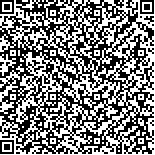吴佼佼,韩莹,莫林宏,等.不同介入顺序的间歇性Theta爆发式经颅磁刺激与康复训练对脑卒中患者上肢功能的影响[J].中华物理医学与康复杂志,2024,46(3):221-225
扫码阅读全文

|
| 不同介入顺序的间歇性Theta爆发式经颅磁刺激与康复训练对脑卒中患者上肢功能的影响 |
|
| |
| DOI:10.3760/cma.j.issn.0254-1424.2024.03.006 |
| 中文关键词: Theta爆发式经颅磁刺激 脑卒中 上肢运动功能 康复训练 |
| 英文关键词: Theta burst magnetic stimulation Transcranial magnetic stimulation Stroke Upper limb motor function Rehabilitation training |
| 基金项目:首都医科大学附属北京康复医院科技发展专项资助项目(2020-050);首都医科大学附属北京康复医院科技发展专项资助项目(2021R-003) |
|
| 摘要点击次数: 3836 |
| 全文下载次数: 3416 |
| 中文摘要: |
| 目的 探讨不同介入顺序的间歇性Theta爆发式经颅磁刺激(iTBS)与康复训练对脑卒中后上肢功能障碍患者的影响。 方法 选取亚急性期皮质下脑梗死后伴上肢运动功能障碍的患者36例,按照随机数字表法将其分为对照组、实验组1、实验组2,每组12例。对照组给予iTBS假刺激联合上肢功能康复训练,实验组1对病灶侧M1区行iTBS后立即进行上肢功能康复训练,实验组2则在上肢功能康复训练后介入iTBS。干预前和干预4周后(干预后),采用Fugl-Meyer运动功能量表上肢部分(FMA-UE)、改良Barthel指数(MBI)评定3组患者的上肢运动功能和日常生活能力,并记录患者干预前后的皮质潜伏期(CL)。 结果 干预前,3组患者的FMA-UE评分、MBI评分、CL比较,差异无统计学意义(P>0.05)。干预后,3组患者的FMA-UE、MBI评分均较组内干预前增加(P<0.05),CL较组内干预前缩短(P<0.05)。与对照组比较,实验组1干预后的FMA-UE[(33.59±10.09)分]、MBI评分[(54.17±10.19)分]较高,CL[(25.32±1.59)ms]较短(P<0.05),实验组2干预后的FMA-UE[(29.50±9.50)分]、MBI评分[(48.75±13.34)分]亦较高,CL[(25.58±1.38)ms]较短(P<0.05)。实验组1和实验组2干预后的FMA-UE评分、MBI评分、CL组间比较,差异无统计学意义(P>0.05)。 结论 iTBS联合上肢功能康复训练能显著改善缺血性脑卒中患者的上肢功能,且两种治疗方法介入的先后顺序不同对治疗效果无明显影响。 |
| 英文摘要: |
| Objective To explore any effect of intermittent theta burst stimulation (iTBS) and of different sequencing of rehabilitation training on upper limb dysfunction after a stroke. Methods Thirty-six patients with upper limb motor dysfunction after subacute subcortical cerebral infarction were divided at random into a control group, an experimental group 1, and an experimental group 2, each of 12. The control group was given prosthetic stimulation and upper limb function rehabilitation training. Experimental group l received focal iTBS stimulation on M1 immediately followed by upper limb rehabilitation training. Experimental group 2 received the same treatment but in reverse order. The experiment lasted four weeks. Upper limb functioning and ability in the activities of daily living (ADL) were quantified before and after the interventions using the Fugl-Meyer upper extremity assessment (FMA-UE) and the modified Barthel index (MBI). Cortical latency (CL) was also recorded. Results Before the treatment there were no significant differences among the three groups, but afterward a significant increase was observed in the average FMA-UE and MBI scores of both experimental groups accompanied by a significant decrease in CL. There was no significant difference between the two experimental groups′ results, on average. Conclusion Supplementing upper limb rehabilitation training with iTBS can significantly improve the upper limb functioning of ischemic stroke survivors, and the sequencing of the training has no effect on the therapeutic results. |
|
查看全文
查看/发表评论 下载PDF阅读器 |
| 关闭 |